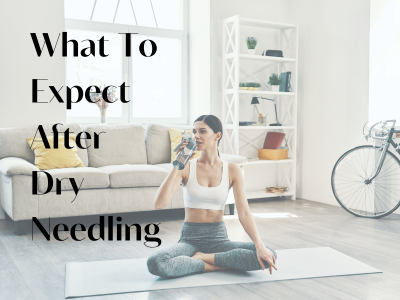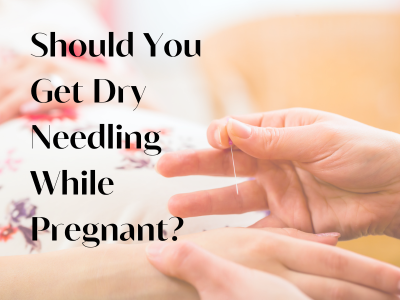How to Fall Proof Your Home For The Elderly
As our loved ones age, ensuring their safety becomes a priority, particularly when it comes to preventing falls in the comfort of their home. About 1 in 4 elderly report they have fallen every year. The risk of accidents increases with age, potentially leading to not only physical injuries but also a significant impact on their overall well-being. With a caring and proactive approach, we want to help you implement practical fall prevention strategies and thoughtful adjustments to make it safer for your elderly loved one at home. There are a lot of little but helpful tips you can follow to ensure that every area of their home is fall-proof.
Fall Proofing Your Home
Maintaining a safe and supportive home environment becomes increasingly important to prevent falls for elderly people. These falls can have significant consequences, which is why fall-proofing your home is a crucial step to minimizing the number of falls they may have. To help you fall-proof your home, we have listed some practical steps and modifications that can be implemented to enhance safety and reduce the risk of falls at home. Understanding common areas where falls occur is crucial for effective prevention. The top five places the elderly tend to fall include bathrooms, staircases, living rooms, kitchens, and bedrooms. Below, we have listed the top five areas to implement to fall-proof your home.
Kitchen
The kitchen is a central and often bustling area of the home, but it also poses specific risks for falls, especially for the elderly. Making sure to implement these safety measures in the kitchen is crucial to ensure a secure environment.
Stable Seating:
If possible, provide a stable chair or stool in the kitchen for short breaks during meal preparation. This can be especially helpful for those who tire easily.
Secure Rugs and Mats:
If rugs or mats are used, make sure they have non-slip backing or use double-sided tape to secure them in place.
Avoid Wet Floors:
Immediately clean up spills to prevent wet and slippery surfaces. Place a rug near the sink to absorb water and provide traction.
Regular Maintenance:
Conduct regular checks for any hazards, such as loose cabinet handles or uneven flooring, and address them promptly.
Accessible Tools and Utensils:
Organize kitchen tools and utensils so that they are easily accessible. Consider using utensils with ergonomic handles for a better grip.
Stairways and Hallways
Stairways and hallways provide a high risk for falls amongst the elderly, as these areas present unique challenges. Here are some key tips to reduce the risk of falls in hallways and stairways.
Contrast in Colors:
Use contrasting colors for stairs and steps to enhance visibility. This helps elderly individuals differentiate each step and reduces the risk of misjudging the height.
Regular Maintenance:
Conduct regular checks for any loose handrails, uneven steps, or worn-out flooring. Promptly address any maintenance issues to prevent accidents.
Anti-Slip Treads:
Consider adding anti-slip treads to stairs. These adhesive strips provide additional traction, making it safer to ascend and descend staircases.
Carpeting:
If using carpets on stairs or in hallways, choose low-pile options with a firm grip. Secure them firmly to prevent tripping.
Handrail Height:
Ensure that handrails are installed at a comfortable height for the elderly. This promotes ease of use and provides effective support.
Bedrooms and Bathrooms
Given the heightened risk of accidents in the bedroom and bathroom for elderly, it is important to make sure they are set up to be accessible and safe. Here are key tips to reduce the risk of falls in the bathroom and bedrooms:
Bath Mats with Grip:
Use bath mats with a non-slip grip outside the shower or bathtub. Ensure they are securely fastened to the floor to avoid tripping.
Shower Seat or Bench:
Consider using a shower seat or bench for added stability during bathing. This provides a secure and comfortable seating option.
Raised Toilet Seat:
Install a raised toilet seat to make sitting down and standing up easier for the elderly.
Bedside Rails:
Consider using bedside rails to assist with getting in and out of bed. These provide added support and stability.
Proper Bed Height:
Adjust the height of the bed to facilitate safe sitting and standing. This can be achieved with the use of bed risers or adjustments to the bed frame.
Other Living Areas
Although the kitchen, bathroom, bedroom, staircase, and hallways are common places for the elderly to fall, don’t overlook other spaces in your home that could allow for an elderly to fall. Home offices, entryways, and outdoor spaces could also prove hazardous. Below are some tips on how to make these spaces more fall-proof.
Cable Management:
Secure cords and cables to prevent tripping. Use cable organizers or adhesive clips to keep them out of walkways.
Clear Entry Path:
Keep the entryway clear of obstacles and clutter. Create a designated space for shoes and outdoor accessories.
Weather Awareness:
Exercise caution in adverse weather conditions. Use appropriate footwear and consider handrails or supports when navigating outdoor steps.
Preventing Falls in Home
Modifying your home is one important way to aid in fall prevention. Another way to help with this is having elderly individuals take proactive steps to prevent falls and enhance their overall safety. Here are several strategies and practices they can incorporate into their daily lives:
Regular Exercise:
Engage in exercises that improve strength and balance. Regular physical activity contributes to overall stability, reducing the risk of falls.
Proper Footwear:
Encourage the use of supportive, well-fitted footwear with non-slip soles. Footwear plays a crucial role in maintaining stability on stairs and in hallways.
Assistive Devices:
For those with mobility challenges, consider the use of assistive devices such as a sturdy cane or walker for additional support.
Vision Checks:
Schedule regular eye check-ups to ensure optimal vision. Update prescription glasses as needed to maintain clear eyesight.
Fall Detection Devices:
Consider using fall detection devices or systems that can alert caregivers or emergency services in case of a fall.
4 P’s of Fall Prevention
There are multiple fall prevention strategies you can use as a guideline to make sure the elderly are protected. The biggest tip to look out for is to follow The 4 P’s of Fall Prevention. They can help prevent falls and check in with elderly to address their needs.
Pain
Ask if they have any pain or discomfort. This will identify what areas they need immediate help.
Position
Ask if their current position is comfortable or if they need help moving to a different position. This will prevent the risk of future injury or pain.
Placement:
Ask if they need anything to be placed where they can easily access it. This prevents unnecessary movements that could result in them falling.
Personal Needs:
Ask them if there is anything they need such as help going to the bathroom or water. This will help make things easier and more accessible.


